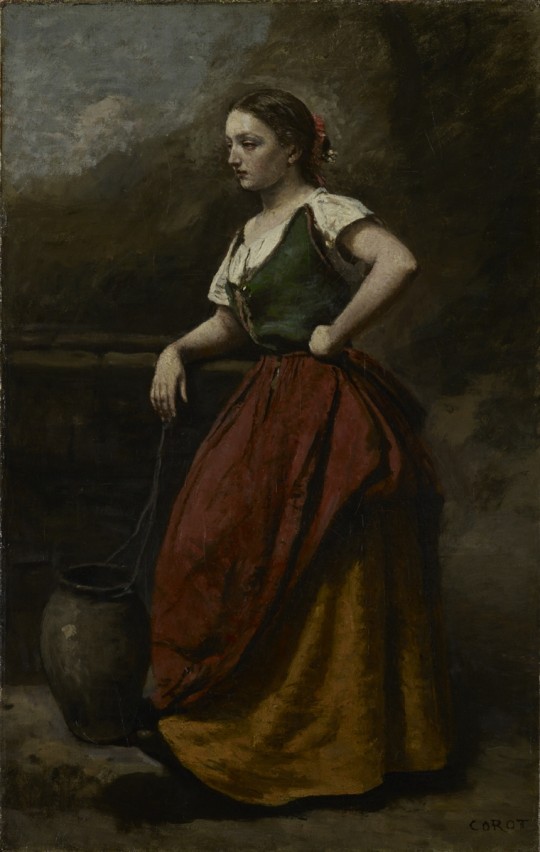
Long-term deposit to the Musée d'art et d'histoire, Geneva
Long-term loan to the Fondation Gandur pour l'Art and of the Jean-Louis Pévost Foundation.
In June 2010, the Fondation Gandur pour l'Art and the Jean-Louis Prévost Foundation acquired the artwork Jeune femme à la fontaine by Jean-Baptiste Camille Corot, and loaned it to the Musée d'art et d'histoire in Geneva for public and permanent exhibition.
Musée Rath, Genève (CH) 14 june 2019 - 27 october 2019
Silences
Curator : Lada Umstätter
The major summer exhibition at the Musée Rath is devoted this year to a unique and original subject: the notion of silence in art. How can the expression "mute poetry", used to describe painting since Antiquity, be validated? This exhibition, which brings together numerous multidisciplinary loans from public institutions and private collectors, lifts the veil on the various forms of silence expressed by art, from the late 15th century to the present day.
The visual arts are inherently silent, as the expression "mute poetry" reminds us, employed since Antiquity to refer to painting. But does that necessarily imply that all works of art are silent? There are paintings that speak volumes, that scream at us, even, and there are others that remain quiet. Some invite the interiority of prayer, while others open the door to contemplation of the infinite. Some are impenetrable or fill us with fear, while others, more enigmatic and secretive, appear to give form to the inexpressible.
Mixing genres, motifs and eras, this exhibition focuses on silence not only in the sense of the absence of noise, sound or speech, but also as a state, a quality of presence in the world, a condensed form of which emanates from certain works of art. Grounded in the viewer's subjectivity and covering the wide range of experiences of silence - soothing or frightening, solitary or shared, mundane or exceptional, intimate, metaphysical or mystical - this exhibition looks at the way in which artists convey silence, and in doing so, gives us the opportunity to experience it.
MUSÉE MARMOTTAN MONET, PARIS (FR) 8 FEBRUARY 2018 - 22 JULY 2018
Le peintre et ses modèles
CURATOR: Sébastien Allard
NATIONAL GALLERY OF ART, WASHINGTON (US) 9 SEPTEMBRE 2018 - 30 DÉCEMBRE 2018
Corot: Women
CURATOR: MARY MORTON
Camille Corot is best known as the great master of landscape painting in the 19th century who bridged the French neoclassical tradition with the impressionist movement of the 1870s. His figure paintings constitute a much smaller, less well-known portion of his oeuvre, but arguably are of equal importance to the history of art, in particular for the founders of modernist painting such as Paul Cézanne, Pablo Picasso, and Georges Braque. Dressed in rustic Italian costume or stretched nude on a grassy plain, Corot’s women read, dream, and gaze, conveying a mysterious sense of inner life. His sophisticated use of color and his deft, delicate touch applied to the female form resulted in pictures of quiet majesty.



